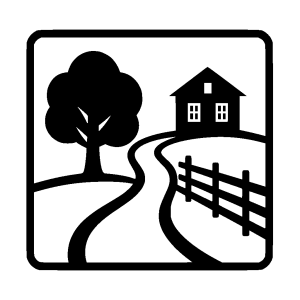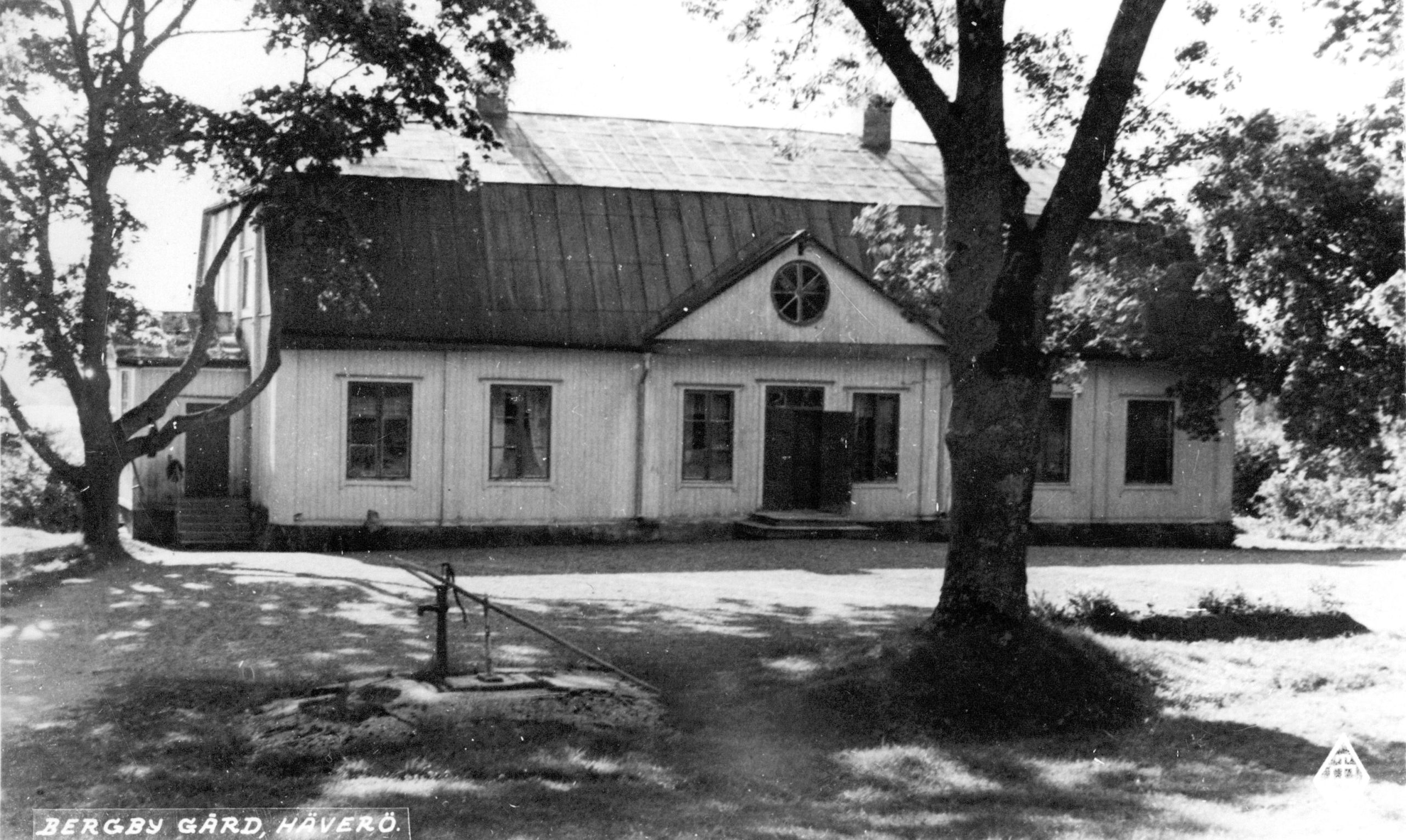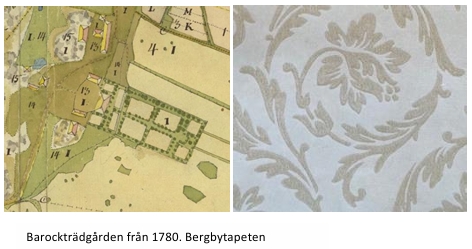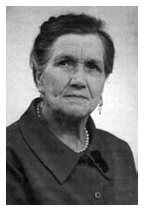
Information board with map, parking lot.
12. Bergby Gård
Bergby Gård has its origins in the Viking Age. The name is documented in writing as early as 1409. The first known map of the village dates back to 1640. At that time, Bergby consisted of five hemman (farms). The manor house (manor house building) –– was originally called Södergården and was built in the 17th century. In its first form, the building is smaller and faces south.


The bookkeeper Peter Jerling from Forsbols bruk bought Bergby after the Russian raids in 1719 and built a new manor house. Parts of the 17th century foundation are included in the manor house (the current southern wing). In 1780 the manor house was bought by a Captain Per Hagtorn. Now the manor house has its current layout with a straight avenue towards the main road, the manor house is turned to the west and a new barracks garden with clear blocks is created. The road from 1780 that leads down to the lake still remains. The watercourse next to the road was considerably stronger and had two watermills (so-called skaltkvarnar). The Bergby wallpaper is an old beautiful paper wallpaper that was found in the Rättarbostaden in Bergby and was newly manufactured over a period of time.

The Russians are coming! On July 12–18, 1719, the Russians burn the entire Roslagen coast from Öregrund to Arholma. Häverö parish is hit hard by the Russian advance. All farms in Bergby, Norrby and Västerkulla are burned down. The Russian ravages are called the Russian terror against the Swedish civilian population 1719–1721. Tsar Peter’s order was to ”ravage and burn as much as possible”. The intention was to force Sweden to accept Russian conquests in Finland and the Baltics in ’peace negotiations’. In 1809, the Russians come back again and land a force in Grisslehamn. This time, the Roslagen coast is saved, but Sweden loses all of Finland and Åland. No wonder that the fear of Russia lives on in Roslagen.

The Mattsson family. In 1918, Bergby Gård was purchased by the homesteader Johan Mattsson from Söderby-Karl. The farm was then in very poor condition. Mattsson restored the farm and ran it until his death in 1938. His daughter Amalia Mattsson took over the farm in 1943. She became a well-known and respected person in the area for her ability to run such an extensive farm. The farm covers 173 hectares, with a barn, stables and many employees. In the summer, she rented out several houses to summer guests. Amalia never married and had no children. Perhaps this was an expression of her desire to live as an independent and self-sufficient woman? In 1964, Amalia Mattsson sold Bergby Gård to Häverö municipality. Amalia was born in 1898 in Söderby-Karl and died in 1979 in Bergby.
In modern times. During the 1960s, Sundbyberg Municipality bought Bergby Gård and established a course and training business. ABF took over the business in 1982 and had the student and camping cabins built. ABF sold the farm in 1997. The business continued under private management until 2019 when a new owner took over. A new phase begins at Bergby Gård. The old stables now house a hotel and conference facility with a restaurant, and several properties have been divided up and sold as condominiums, holiday homes and villas. Bergby Gård has been given new life.

